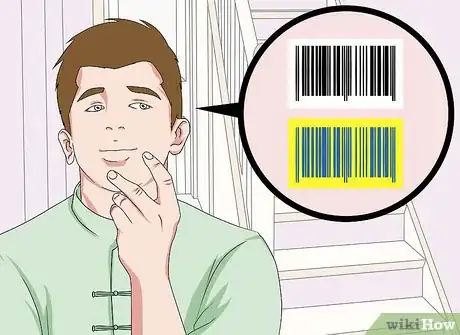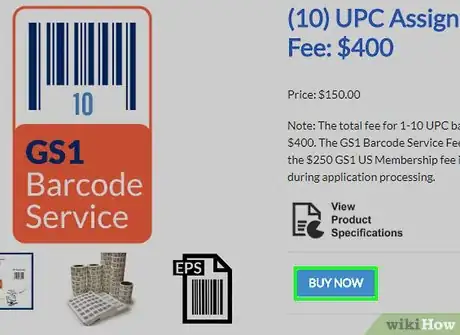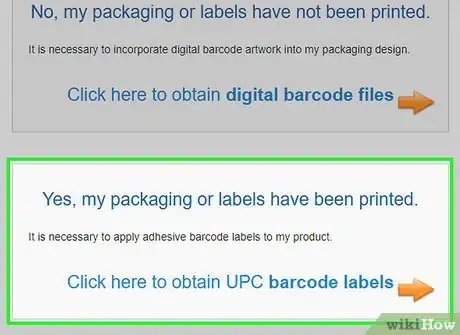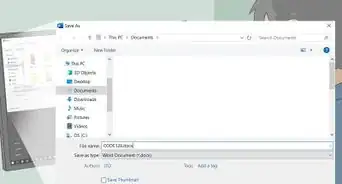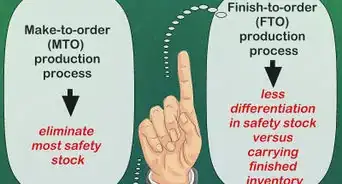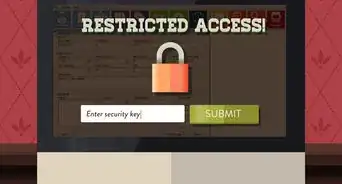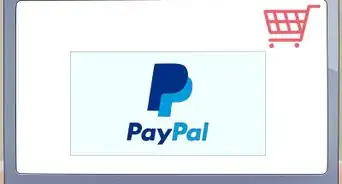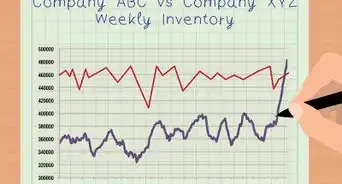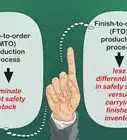This article was co-authored by Zachary Green. Zachary Green is an Entrepreneurship Coach, Author, and U.S. Marine Corp Veteran. With over 10 years of experience as an entrepreneur, he specializes in helping people transform their businesses, relationships, and lives. Zachary’s book, Warrior Entrepreneur, focuses on how warrior traits can help entrepreneurs, leaders, and others battle through adversity and accomplish their missions. Zachary was featured in Entrepreneur Magazine, on the front page of Yahoo.com, MSN.com, and in USA Today, along with numerous other local and national media outlets, and was named Entrepreneur of the Year by Governor John Kasich. Zachary was also selected by the Obama White House as one of 10 entrepreneurs to represent the United States at the Global Entrepreneur Summit. He was also featured in the US Playing Cards Frontline Leaders playing card series as one of 52 veteran entrepreneurs. Zachary earned a BA in Marketing and Sports Management from Bowling Green State University in Ohio. He won the Ohio Chamber of Commerce Entrepreneur of the Year in 2013, the SBA Ohio Small Business Exporter of the Year in 2016, a Spartan Distinguished Alumni Award in 2017, and a President’s E Award in 2019.
There are 7 references cited in this article, which can be found at the bottom of the page.
This article has been viewed 28,843 times.
You’ll need to get Universal Product Codes (UPCs) for your products if you plan on selling through major retail vendors. UPCs are used for tracking and inventory purposes, and they’re distributed through a nonprofit entity called GS1. These 12-digit codes found under barcodes consist of a company prefix, an Item Reference Number, and a check digit. Once you fill out an application through GS1, pay a fee, and choose the right barcode for your products, you’ll be ready to take your business to the next level!
Steps
Applying For a UPC
-
1Figure out how many products you will need UPCs for. The most important thing to understand is that each variation of each product you sell requires a unique barcode. You’ll need to determine exactly how many barcodes you need before you fill out the GS1 application.
-
2Choose the GS1 option based on your barcode needs.
- Single GTIN: If you have only a few products that need barcodes, this might be the most cost-effective option for your company. Single GTINs are a great option for small companies that are looking to quickly list their products for sale. You can license a single GTIN for $30 and there is no annual renewal fee. (Global Trade Item Numbers (GTINs) are encoded into UPC barcodes.)
- GS1 Company Prefix: A GS1 Company Prefix allows businesses to get multiple barcodes at a single time, as well as identify locations, mixed cases, create coupons, and create higher levels of packaging like a case or pallet. GS1 Company Prefixes are great for companies with growing product lines. You can license a GS1 Company Prefix that comes in different “capacities” representing the maximum number of unique products you can identify with that license. As long as you renew your Membership every year, your product data will remain linked to your company information.
Advertisement -
3Fill out the application and pay online. The GS1 check out process has 3 simple steps:
- Select a single GTIN or GS1 Company Prefix and put them in your cart. Provide your contact information
- Pay
- You will get a welcome email from GS1 US within minutes. It includes all the important information you need to get started, including access to myGS1 US—your online member center. [1]
- Note that the GS1 issues prefixes, and due to a 2002 settlement with the UCC (Universal Code Council), pre-2002 prefixes can be used without renewal fees and are significantly cheaper than buying directly from the GS1. 1 code costs $5 instead of $30, and there are no renewal fees even if you buy 1,000. Contrary to what some understand, this is entirely allowed and compliant (see Reference). [2]
Ordering Barcodes
-
1Choose a design for your barcode. The safest option for easy scanning is black bars on a white background, but you can also choose blue bars and yellow or red backgrounds. The barcode itself should be between 1.1875 in × 0.813 in (3.016 cm × 2.065 cm) and 2.92 in × 2.04 in (7.4 cm × 5.2 cm), with unprinted space to the left and right for easy scanning.
-
2Buy digital barcodes if you haven’t finalized your product’s packaging. Use the GS1 website to order digital barcodes with the UPCs you chose. You will receive them in .eps format, which can then be used in your packaging design using an application like Adobe Photoshop.[3]
- The barcode should be located somewhere on the package that will remain flat and unwrinkled for easy scanning. Barcodes are usually placed in the lower right-hand corner of the back of the package.[4]
- Changing the size of the barcode may affect how well it scans. To be on the safe side, double-check to make sure you get the size you need.[5]
-
3Order physical barcodes if you have already printed your packaging. You can order these through the GS1 website. They will come in the form of adhesive labels, which you can then physically apply to all of your products.
- Physical barcode labels are more expensive than digital ones, so you should only choose this option if your packaging materials have already been produced.
- Your labels should be placed in the same location on all of your products. Choose a place that will be easy to scan and unlikely to wrinkle during shipping and handling.
-
4Verify your barcodes. Before you send your products off to a retailer, you’ll want to make sure all your barcodes scan the way they’re supposed to. There are several certified services that will verify your barcode for you for a fee. You can find a full list here: https://www.gs1us.org/tools/solution-provider-finder/solution-provider-finder/verify-a-barcode.
- You may also wish to buy your own verification equipment through GS1, such as the GS1 Conformance Standard Test Cards.[6]
Community Q&A
-
QuestionDo you need different barcodes for each color of one design?
 Patrick JCommunity AnswerYes, you do. Each unique product (color, size, fabric, etc.) needs a unique UPC barcode.
Patrick JCommunity AnswerYes, you do. Each unique product (color, size, fabric, etc.) needs a unique UPC barcode. -
QuestionHow can I order a barcode image for an existing, previously purchased product?
 Patrick JCommunity AnswerIf you already have a UPC, you can generate a barcode for free in seconds at free-barcode-generator.org. If you don't yet have a UPC, you can purchase one online.
Patrick JCommunity AnswerIf you already have a UPC, you can generate a barcode for free in seconds at free-barcode-generator.org. If you don't yet have a UPC, you can purchase one online. -
QuestionCan I order more as needed?
 Patrick JCommunity AnswerYes, you can order more at any time. They are available whenever you need them.
Patrick JCommunity AnswerYes, you can order more at any time. They are available whenever you need them.
Warnings
- There are several services that sell used UPCs. It is often a cheaper alternative to the modern GS1, and it is 100% compliant at most retailers. However, some specific retailers require that your company owns a prefix from the GS1 (such as if you have Brand Registry at Amazon), so if that is a requirement, you can purchase them at the official GS1 website.[7] .⧼thumbs_response⧽
Expert Interview

Thanks for reading our article! If you'd like to learn more about UPC codes, check out our in-depth interview with Zachary Green.
References
- ↑ https://www.gs1us.org/upcs-barcodes-prefixes/get-a-barcode
- ↑ https://upcs.com/ucc-gs1-settlement/
- ↑ https://upcs.com
- ↑ https://upcs.com/blog/gtin-vs-upc-what-are-they-and-how-to-use-barcodes/
- ↑ https://www.gs1us.org/upcs-barcodes-prefixes/get-started-guide/4-place-barcodes-on-products
- ↑ https://www.gs1us.org/upcs-barcodes-prefixes/get-started-guide/5-test-verify-printed-barcodes
- ↑ https://www.gs1us.org/upcs-barcodes-prefixes/how-to-get-a-upc-barcode/get-upc-barcodes
